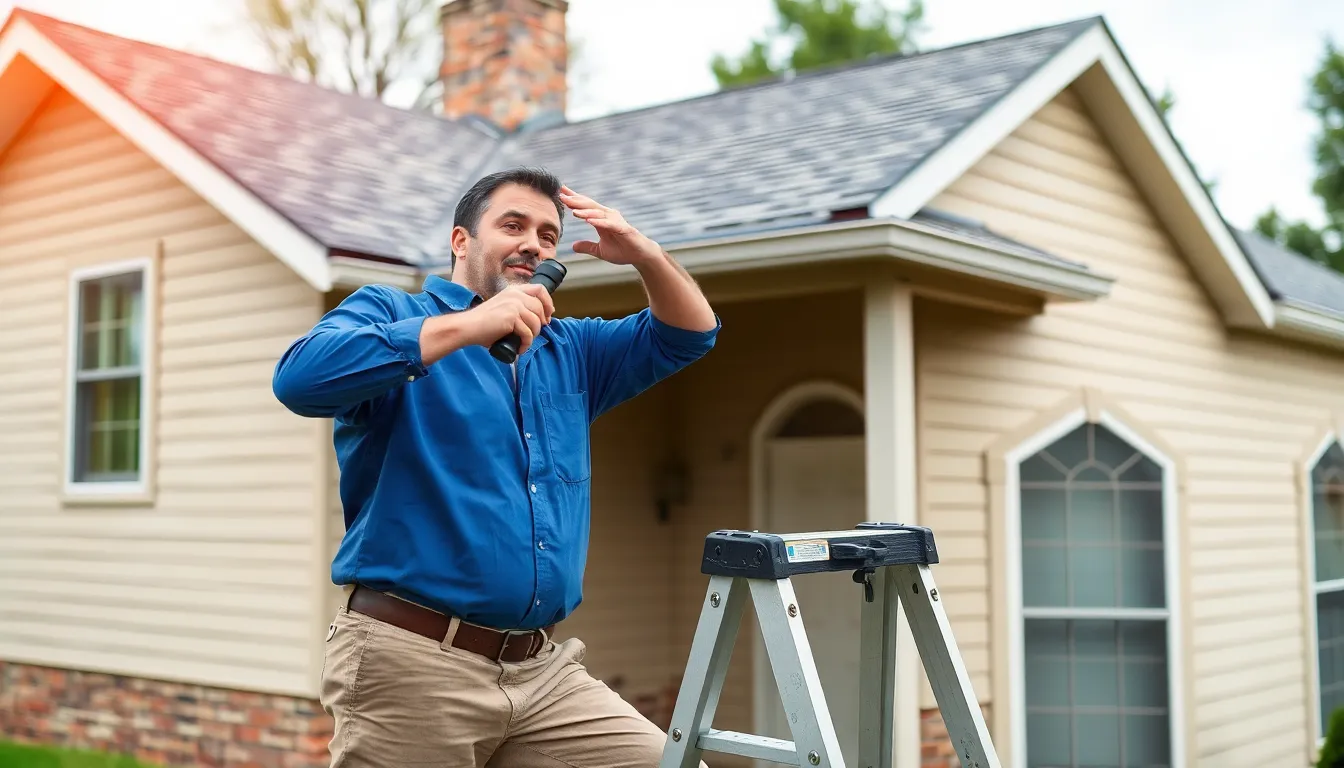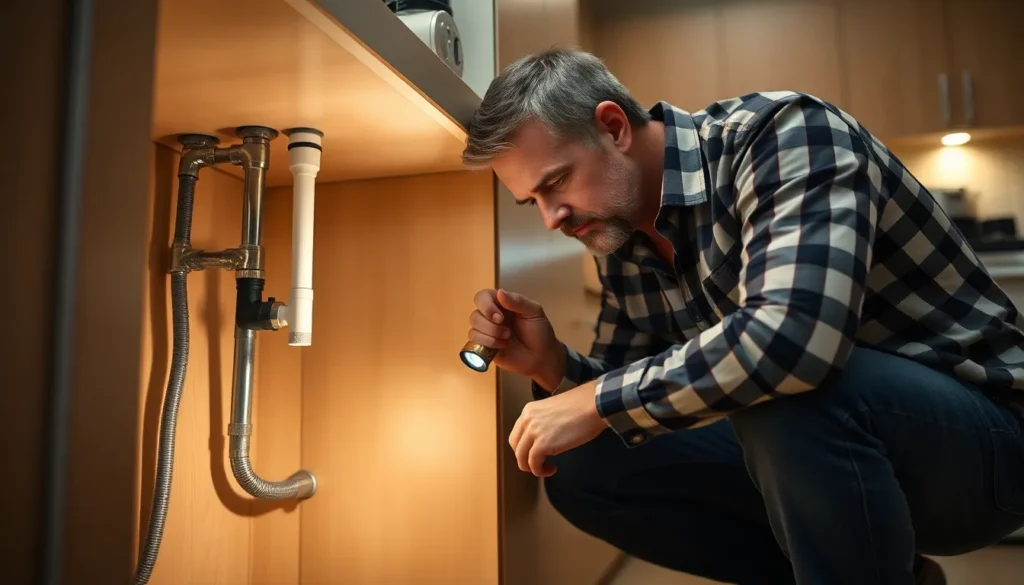Buying a home can feel like a thrilling rollercoaster ride—exciting twists and turns, but also a few heart-stopping moments. Before taking that leap, it’s crucial to ensure your dream home isn’t hiding any skeletons in its closets. Enter the home inspection checklist, your trusty sidekick in the quest for a safe and sound abode.
Table of Contents
ToggleImportance Of A Home Inspection Checklist
A home inspection checklist serves as a vital resource for prospective buyers during the home purchasing process. It helps identify potential issues that may not be immediately visible. Specific focus areas in the checklist often include structural integrity, plumbing systems, and electrical wiring.
Prioritizing safety, this checklist ensures that buyers do not overlook critical concerns. Identifying problems early can prevent costly repairs later. A well-organized checklist also streamlines the home viewing process, allowing for a systematic evaluation of key components.
Utilizing a home inspection checklist contributes to informed decision-making. Buyers gain insights about the property’s condition, which can strengthen their negotiating position. Comprehensive checklists often include essential items such as roofing, foundation, and insulation checks.
Reviewing a thorough checklist encourages diligence and reduces stress throughout the transaction. Homebuyers often find reassurance in knowing they’ve covered all necessary aspects before finalizing any decisions. Incorporating the checklist into the home inspection can maximize the value received from the investment.
Lastly, using a home inspection checklist reflects preparedness and can lead to successful home buying experiences. By systematically evaluating critical components, buyers demonstrate their commitment to ensuring the integrity of their future home.
Key Components Of A Home Inspection Checklist

A comprehensive home inspection checklist covers essential components to ensure buyers make well-informed decisions. Each section targets critical areas of the home, enabling a thorough evaluation.
Structural Elements
Structural components include the foundation, walls, and framing. Inspectors assess the foundation for cracks and instability. Observations often focus on signs of movement or settling in the walls. Roof support must also be evaluated for any visible damages. Siding and window alignment receive scrutiny to determine overall integrity and safety. Any issues found in structural elements can lead to expensive repairs if not addressed promptly.
Electrical Systems
Electrical systems comprise service panels, wiring, outlets, and fixtures. Inspectors evaluate service panels for accessibility and proper labeling. Wiring inspection reveals whether it meets current codes and safety standards. Outlets are tested for functionality and grounding. Light fixtures are checked for operation to ensure safety and efficiency. Electrical problems can pose significant safety hazards, making this evaluation critical for buyers.
Plumbing Systems
Plumbing systems involve pipes, fixtures, and water heaters. Inspectors check pipes for leaks and corrosion. Water pressure is measured to ensure adequate supply throughout the home. Fixtures, including sinks and toilets, are tested for functioning and proper drainage. Additionally, the condition of the water heater is assessed for efficiency and safety. Addressing plumbing issues pre-purchase saves future headache.
HVAC Systems
HVAC systems maintain climate control and air quality. Inspectors evaluate furnaces and air conditioning units for functionality and maintenance history. Ductwork is checked for leaks, and filters are examined for cleanliness. Proper airflow is essential for efficiency and comfort. Issues detected in HVAC systems can lead to significant energy costs and discomfort.
Roofing
Roofing inspection focuses on the condition of shingles, flashing, and gutters. Inspectors identify missing or damaged shingles that may lead to leaks. Flashing around vents and chimneys is evaluated for wear. Gutters must be checked for proper drainage and blockages. A well-maintained roof protects against water damage and enhances home longevity, making it a key focus during inspections.
Tips For Conducting A Thorough Home Inspection
Conducting a home inspection requires careful planning and focus. Preparation sets the foundation for a successful process.
Preparation Before The Inspection
Choose a suitable time for the inspection to ensure adequate daylight. Gather essential tools such as a flashlight, notepad, and camera for documentation. Reviewing the home inspection checklist beforehand allows for better organization. Contact the seller’s agent to confirm access and any specific requirements. Prepare a list of questions to ask the inspector, enabling clear communication about concerns. Ensure the property is accessible by checking the availability of utilities, as this helps with a comprehensive assessment.
What To Look For During The Inspection
Inspectors examine various components for quality and safety. Look for signs of water damage, including stains on ceilings and walls. Assess the roof for missing shingles and any signs of wear. Evaluate electrical systems, especially outlets and circuits for compliance and functionality. Check plumbing fixtures for leaks under sinks and behind toilets. Investigate HVAC systems to ensure they heat and cool effectively, maintaining comfort levels. Observe the foundation for cracks or settlement issues, as these may indicate deeper problems. Identify signs of pests, such as droppings or damage, which could lead to further issues if unaddressed.
Common Issues Found In Home Inspections
Home inspections often reveal a range of underlying issues in properties. Structural problems frequently surface, such as cracks in foundations or walls that can compromise integrity. Inspectors usually note water damage signs, which can indicate severe leaks or previous flooding events. Moisture presence in basements and attics often raises red flags.
Electrical issues are prevalent as well. Outdated wiring may not meet current safety standards. Moreover, service panels sometimes show signs of overheating or corrosion, prompting further evaluation. Inspectors will carefully check outlets and fixtures for functionality.
Plumbing systems also undergo scrutiny. Buyers frequently encounter leaks from pipes that could escalate into significant problems. Fixtures often require thorough inspection for proper flow and drainage. Water heaters need examination for age and effectiveness.
HVAC systems aren’t overlooked in inspections either. Many buyers face inefficiencies with heating and cooling units. Inspectors assess the overall condition of furnaces and air conditioners to ensure optimal operation. Filters need replacement if they show excessive dirt accumulation.
Roofs often present concerns in home inspections. Shingle conditions relate directly to water protection, so missing or damaged shingles raise potential issues. Flashing around chimneys and vents requires careful examination, as improper installation can lead to leaks.
Presence of pests can also be a common finding. Signs of infestations, such as droppings or nests, warrant immediate attention. These indicators require proactive measures to mitigate risks.
Addressing these common issues during the home inspection process fosters informed decision-making for buyers. Understanding these potential problems allows for negotiation on repairs or price adjustments, ultimately ensuring safety and satisfaction in the home-buying journey.
A home inspection checklist is more than just a tool; it’s a buyer’s best ally in the home-buying journey. By systematically evaluating critical components, it empowers buyers to make informed decisions and negotiate effectively.
Prioritizing safety and thoroughness during inspections helps uncover hidden issues that could lead to costly repairs down the line. This proactive approach not only alleviates stress but also instills confidence in the home-buying process.
Ultimately, utilizing a comprehensive checklist reflects a commitment to ensuring the integrity of a future home, paving the way for a successful and satisfying purchase. With diligence and preparation, buyers can navigate their journey with assurance and peace of mind.









